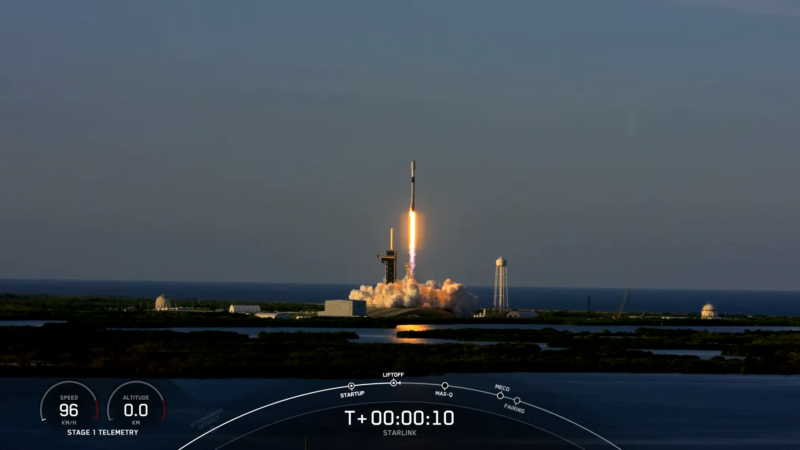
Historic Pad 39A at the Kennedy Space Center (KSC) in Florida kicked off the United States’ 2022 manifest in fine style late this afternoon, as a previously-flown Falcon 9 booster took flight with a 49-strong batch of low-orbiting Starlink internet communications satellites.
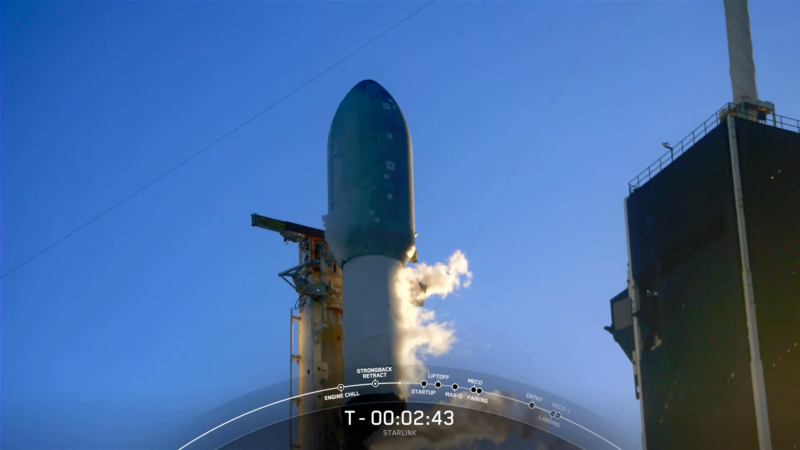
Liftoff of the B1062 core—making its fourth trek to space—took place at 4:49 p.m. EST Thursday, shortly before local sunset. Fifteen minutes later, the first Starlink “stack” of 2022 was successfully deployed, bringing the total number of these flat-packed satellites inserted into orbit since May 2019 to just shy of 2,000.
Weather for Thursday’s “instantaneous” launch was highly optimal, with forecasters from the 45th Weather Squadron at Patrick Space Force Base having identified an 80-percent probability of acceptable conditions, diminishing to 70 percent for a backup attempt on Friday.

“A wave will push north over the Space Coast today, increasing cloud coverage and rain chances,” it was noted on Wednesday.
“The unsettled weather is pulled away early Thursday, as the low-pressure system moves north along the Atlantic Coast. The primary weather concern for a Thursday launch attempt is the Cumulus Cloud Rule.”
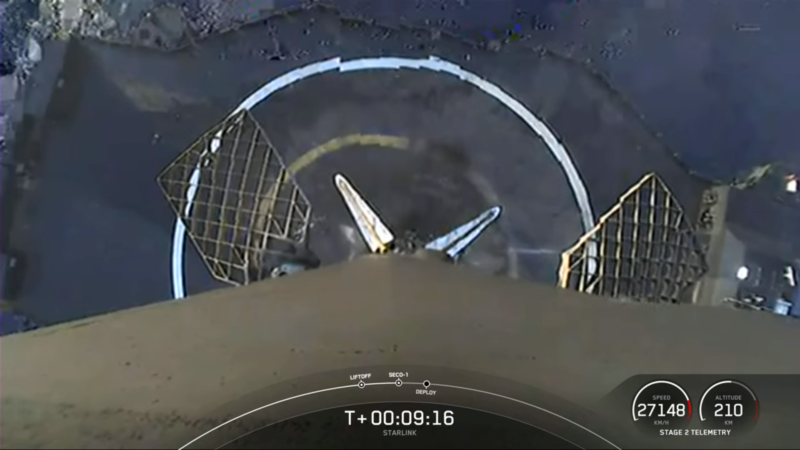
The first indication of an impending launch came on New Year’s Day, when SpaceX’s newest Autonomous Spaceport Drone Ship (ASDS), “A Shortfall of Gravitas”, prepared to put to sea from Port Canaveral.
This particular drone ship arrived on the Space Coast last summer and first saw service last 29 August to retrieve the returning B1061 core after it had lifted the CRS-23 Cargo Dragon to the International Space Station (ISS).
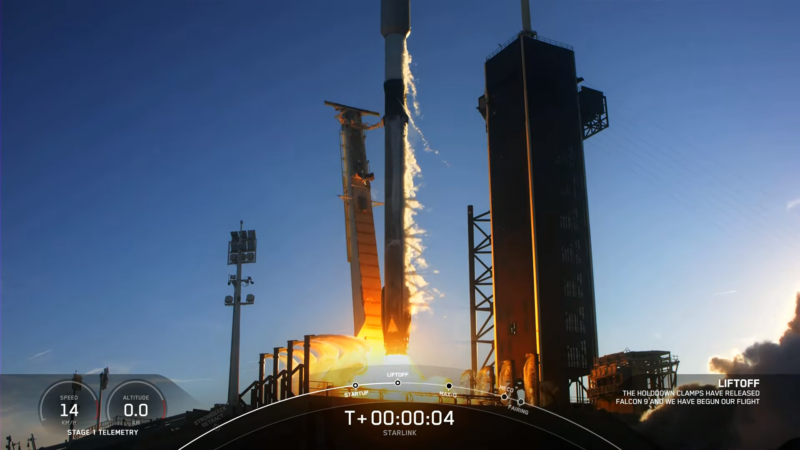
ASOG went on to successfully recover three more Falcon 9 cores in November and December, most recently the booster from last month’s launch of the powerful Türksat 5B communications satellite.
Towed out to sea by the Zion M. Falgout tug, it reached its recovery point, about 395 miles (637 kilometres) southeast of the Cape on Tuesday. This ASDS location was selected to improve the likelihood of fairing recovery options in the winter months.
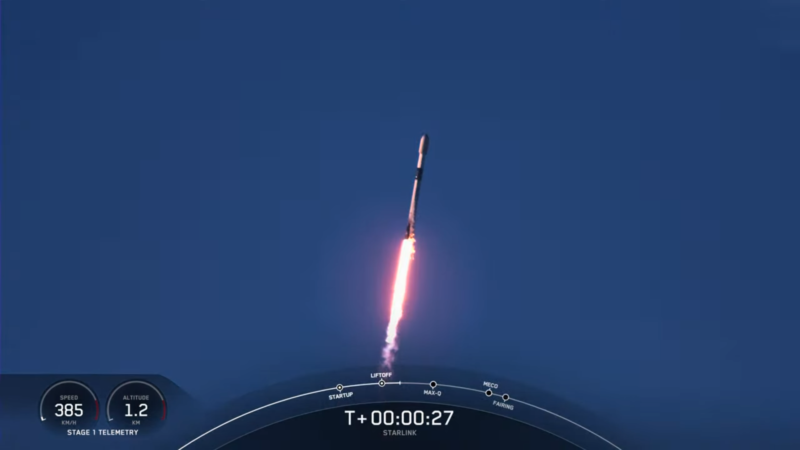
Meanwhile, the B1062 booster, blackened and scarred from three previous launches and high-energy re-entries, was rolled up the ramp to historic Pad 39A about 11 p.m. EST Wednesday.
This booster delivered a pair of Block III Global Positioning System (GPS) navigation and timing satellites to Medium Earth Orbit (MEO) for the U.S. Space Force in November 2020 and June 2021, then lifted Dragon Resilience to low-Earth orbit with the all-civilian Inspiration4 crew last September.
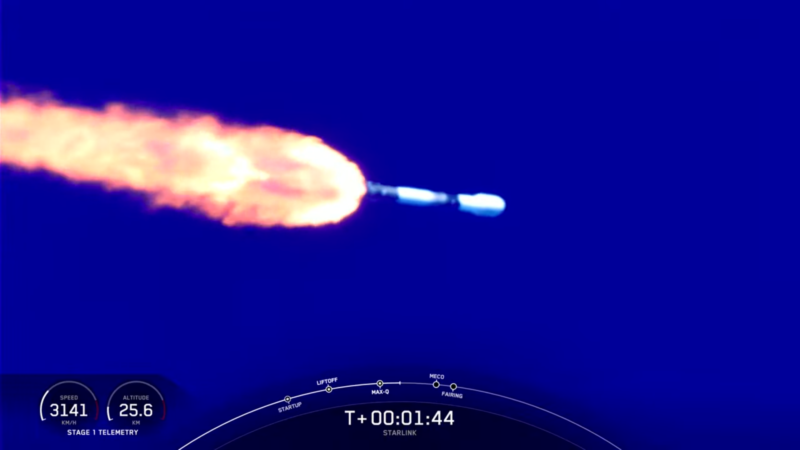
With this afternoon’s flight, B1062 becomes the tenth SpaceX bird to have launched as many as four missions.
It was also fitting that the United States’ 2022 manifest should kick off from historic Pad 39A, a complex first used for the maiden Saturn V launch in November 1967. Since then, it supported all but one of the Apollo lunar missions, as well as the launch of the Skylab space station and no less than 82 Space Shuttle flights.
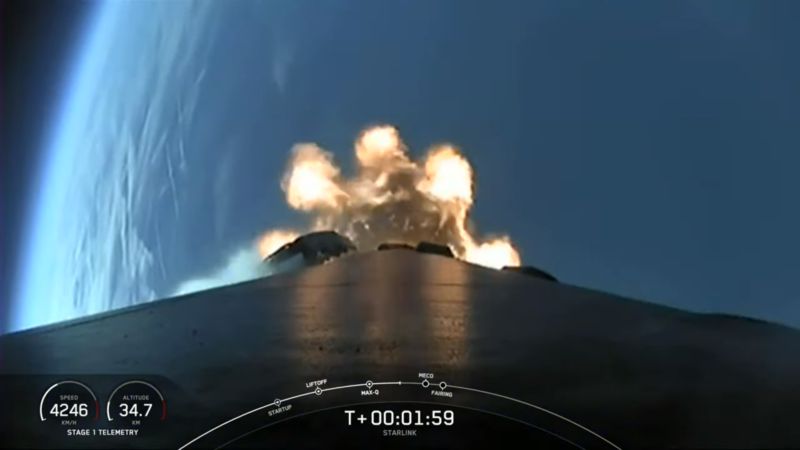
Following its retirement from shuttle service after STS-135 in July 2011, the complex was leased to SpaceX and between February 2017 and today a total of 39 Falcon 9 and three Falcon Heavy missions have taken place. By the end of 2021, SpaceX had flown a dozen launches off 39A, equaling with 2017 as the pad’s most-used year on record.
This afternoon’s flight got away in fine style, the nine Merlin 1D+ first-stage engines of B1062 punctuating a beautifully deep-blue Florida sky to meet an “instantaneous” window at precisely 4:49 p.m. EST.
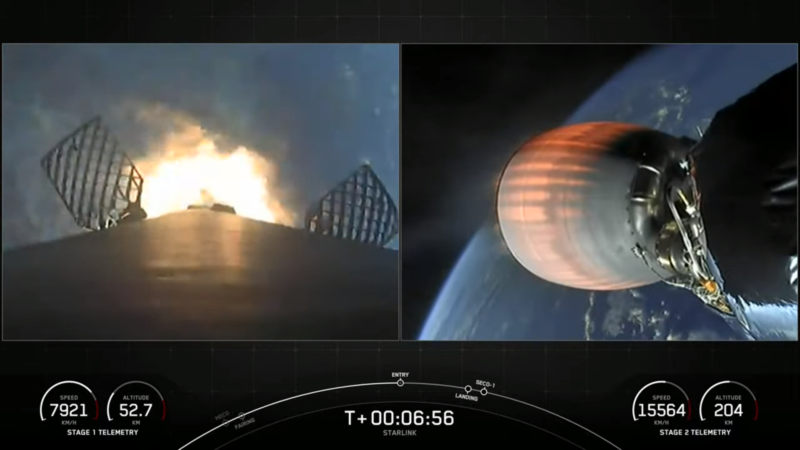
Powering smoothly uphill, the core separated from the stack at 2.5 minutes and commenced its descent towards the drone ship, touching down successfully about eight minutes into the flight. Meanwhile, the Merlin 1D+ Vacuum engine of the Falcon 9’s second stage picked up the baton for a six-minute “burn” to pre-position the Starlink stack for deployment.
At 5:04 p.m. EST, the next 49 members of this steadily burgeoning constellation of internet communications satellites were released, headed for an orbital “slot” at 53.2 degrees of inclination and an altitude of 340 miles (540 kilometers). This marked the fourth group of Starlinks—202 satellites in total—to have been emplaced at the 53.2-degree plane of inclination since last November.
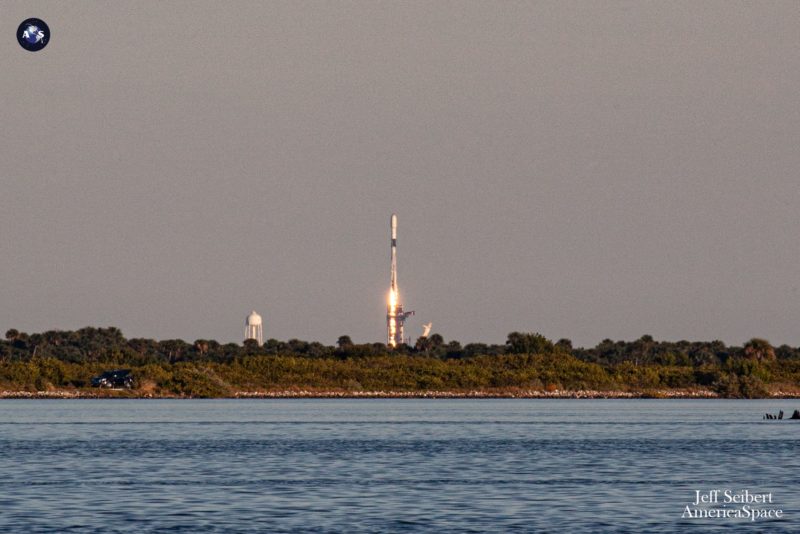




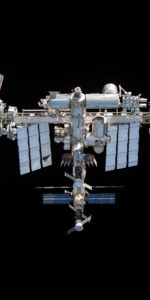
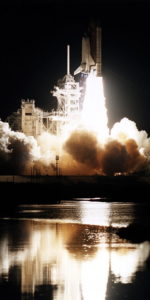
2 Comments
2 Pings & Trackbacks
Pingback:First Axiom Mission Completes FRR, Aims for 3 April Launch - AmericaSpace
Pingback:Historic Ax-1 Mission Primed for Friday Launch, Saturday ISS Docking - AmericaSpace